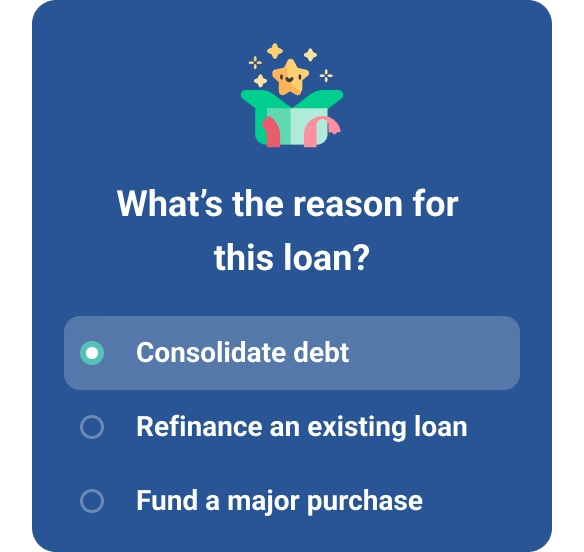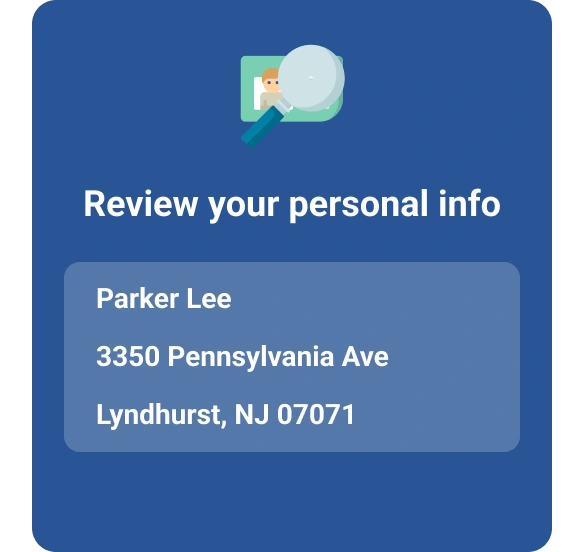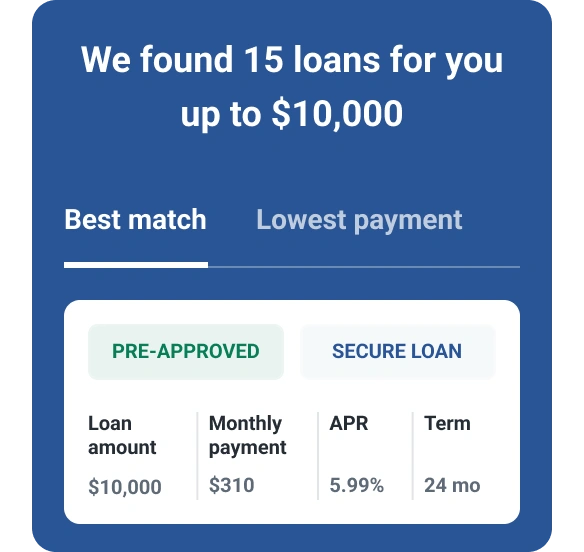Personal Loan vs. Cash Advance: Which Is Best?

When you're in a financial bind—maybe your car needs pricey repairs, or you've lost a job and you need to pay this month's bills—finding a loan as quickly as possible is the priority. Personal loans and credit card cash advances are two options, but they each have pros and cons.
Here's a guide to choosing between personal loans and cash advances when you're trying to make ends meet, and a few other alternatives to consider.
How Does a Personal Loan Work?
A personal loan is a type of installment loan, which means you'll borrow a certain amount and pay it back in fixed monthly payments for a specific period of time. Personal loans are generally unsecured, which means they're not backed by collateral—such as a house or car—that the lender can take possession of if you don't pay as agreed.
Most lenders will use your credit score to determine your eligibility and interest rate, plus your debt-to-income ratio (DTI), which indicates how much of your gross earnings go toward debt each month. You're more likely to get approved, and get the lowest rates, if your credit score is higher than 670 and your DTI is under 36%. There are lenders that cater to those with lower scores and higher DTIs, however. Some also use alternative data like employment and education history to assess eligibility, which has been shown to lead to higher applicant approval rates.
As of the second quarter of 2019, the average personal loan interest rate was 9.41%, according to Experian data. But rates can range from about 6% to above 100% depending on the lender, your credit and other factors. Terms commonly range from 24 to 60 months, with some reaching 84 months. The size of the personal loan you're approved for depends on your creditworthiness, but loans are typically available in amounts from less than $500 and up to $100,000.
How Does a Credit Card Cash Advance Work?
A credit card cash advance is a short-term loan provided by your credit card issuer, rather than by a traditional or online lender. On your credit card statement, you'll find your individual cash advance limit, which will likely be smaller than your card's credit limit. You can generally withdraw a cash advance at an ATM with your credit card, via a check sent to you by the issuer or in person at a bank.
While you won't have to go through the process of applying for a personal loan with a new lender, you'll pay credit card cash advance fees and interest. Card issuers charge an initial fee, often 3% to 5% of the cash advance amount, and the bank or ATM will typically also charge a fee for their end for the transaction.
Additionally, interest rates on cash advances are often higher than a card's interest rate for purchases. For instance, a credit card may charge 17.24% to 25.99% variable APR on purchases, but a variable 27.24% APR on cash advances. On top of it all, credit card issuers may start charging interest as soon as you take out a cash advance, which can cause them to get costly fast.
How to Choose Between a Personal Loan and a Cash Advance
The decision between a personal loan and a cash advance often comes down to the urgency of the need, the interest rate you're likely to pay and how quickly you can pay off the loan.
A personal loan is best when:
- You have good credit. Those with good or excellent credit scores are likely better off choosing a personal loan than a cash advance, since cash advance interest rates are on the higher end. If you have solid credit and a low DTI, you may even get a lower interest rate on a personal loan than what you'd receive on a credit card.
- You are willing to shop around. You'll have a better chance at a low interest rate and low fees if you compare personal loan rates across multiple lenders. That means prequalifying with lenders on their websites—getting an interest rate estimate based on some basic financial information—and checking with local banks and credit unions for offers. You can get matched with personalized loan offers through Experian.
- You don't have a credit card, or you want to avoid a high-interest cash advance. You won't be able to get a credit card cash advance without having a credit card in your name. In general, though, the high cost of a cash advance makes it an option that the majority of borrowers should avoid if possible. Personal loans are often more flexible, and offer more ways to avoid high fees. You may be able to get an interest rate discount if you're already a customer at the bank you borrow from, or if you sign up for automatic payments.
Alternatively, a cash advance might be good when:
- You need the money immediately. The ability to withdraw a cash advance from an ATM makes this option attractive if you are in dire straits and need money now. But the fees at stake could make a cash advance prohibitively expensive, and risk that you won't be able to pay it off on time. A similarly fast alternative to a cash advance is a personal loan from an online lender, some of which offer same-day or next-day funding. A local credit union may also be able to provide a fast personal loan, but you'll typically have to join the credit union as a member first.
- You're able to pay off the loan quickly. If you can pay off the cash advance in just a few weeks or months, high interest rates are less of a concern, and the immediacy of the funding may win out. Before you borrow, make absolutely sure you can comfortably afford not only the cash advance payoff but also that month's other expenses and debt payments.
Other Options for Getting a Quick Cash Loan
If neither a personal loan nor a credit card cash advance will work for you, there are other options, some of which might even cost less. They include:
- 0% intro APR credit card: This isn't an option for immediate cash, but an intro 0% APR credit card can help you avoid paying interest if you need to cover an emergency expense. If you're approved, cards with 0% intro APR offers give you a certain period of time—say, 12, 15 or 18 months—during which time purchases won't accrue interest. Just be sure to pay off the balance before the end of that period, or risk a high interest rate. Also, you'll often need good credit to qualify.
- Lending circles: Nonprofit organizations including Mission Asset Fund operate lending circles, which are groups of up to 12 people who borrow money from each other at low or no interest. In some cases, these organizations report payments to the credit bureaus, which means you can also build credit by repaying the loan on time. It will require some research to find a lending circle that works for you, and you may not be first in line for funding once you join.
- Financial assistance programs: You can also search for targeted assistance if you need money to pay utility bills, for instance, or rent. Call 211 for access to free guidance on the federal, state and local programs you may qualify for. Benefits.gov also offers a search tool to help you understand which government programs may meet your needs.
- Borrowing from family or friends: If a friend or family member is willing to help out, don't be afraid to ask for a loan. You can set up terms, including a repayment period and interest rate, just like a traditional loan if it would make one or both parties feel more secure.
Avoid payday loans, title loans and pawn shop loans, however. These are quick-cash options that carry higher interest rates than cash advances and personal loans, and have the potential to trap borrowers in a cycle of debt.
How to Build Up Your Emergency Fund
Once you're in a stronger financial position, direct your attention to building up an emergency cash reserve that can help you avoid the need for a quick loan in the future. The ideal size of your emergency fund is three to six months' worth of basic expenses, but it may make more sense for you to start small—with a goal of saving $200 or $500, for example.
You can fund this account with a windfall such as a tax refund or by automatically transferring a small amount to the account each month. A good option is an online savings account that pays you higher interest rates for saving than a typical bank would.
Need a loan?
Whether you're shopping for a car or facing a last-minute expense, compare loan offers matched to your credit profile.
Start now for freeAbout the author
Brianna McGurran is a freelance journalist and writing teacher based in Brooklyn, New York. Most recently, she was a staff writer and spokesperson at the personal finance website NerdWallet, where she wrote "Ask Brianna," a financial advice column syndicated by the Associated Press.
Read more from Brianna

